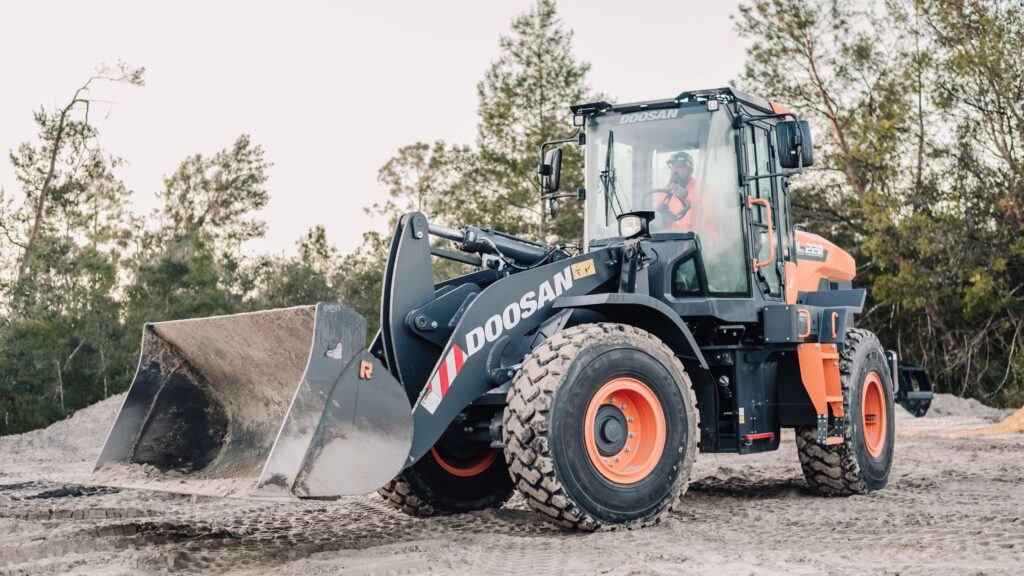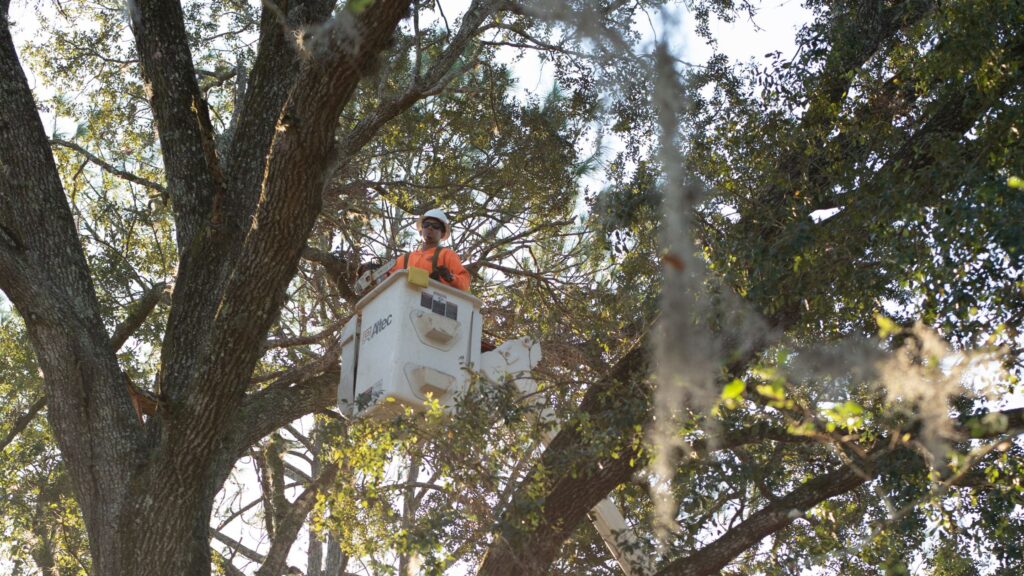Trees in your yard have so many benefits. They add a touch of natural beauty, they can increase your property value, they provide privacy, and they can even help reduce your energy bill. Trees are a great asset; however, in order to benefit from their tremendous value, you need to take good care of them. Trees need to avoid disease and have a constant supply of the basic necessities (sunlight, water, and nutrients) in order to survive. When properly cared for, trees can live for hundreds of years.
While tree maintenance might sound simple, it actually involves more than occasional pruning. In fact, trees face a different set of challenges every season, so in order to keep your trees healthy, preventative maintenance is a year-round activity. While ongoing care might sound costly and time-consuming, it will really pay off in the end as you’ll get to enjoy all of the wonderful advantages of big, healthy trees in your yard. Below, we’ll discuss the benefits of seasonal tree maintenance and everything you need to do to keep your trees in good shape:
Why Tree Maintenance Is So Important
Maintaining healthy trees is important for both landowners and the overall environment, but it requires a little bit of work. Here are several benefits of regular tree maintenance:
1. It Prevents Disease
Trees, just like any other living organism, are susceptible to disease. Environmental changes and destruction by pests are common reasons why trees become sick; however, physical damage to the trunk, bark, or roots can also leave trees with wounds that can become entry points for disease. Trees that do not receive adequate water or nutrition will quickly become unhealthy and will have a more difficult time fighting off disease compared to healthy trees.
Diseases that impact trees are mostly fungal. Mild disease can impact trees aesthetically. Early signs of disease are most easily observed on the branches, leaves, or needles of the tree. Pine needle rust, Anthracnose, lead spots, tar spots, and mildew are all signs that a branch is diseased or dying. As the disease progresses, peeling bark, leaf-free branches, broken branches, sections of rot, and cavities or cracks in the trunk are all visible signs that a tree might be struggling with disease.
As disease spreads and becomes worse, it can ultimately become lethal to the tree. If a tree branch begins to show signs of disease, pruning is the best way to stop it from spreading further and save the rest of the tree. As a result, it’s important to remove wilting or dying branches as quickly as possible. Tree branches can die or become sick during any season, so it may be necessary to evaluate the health of your branches every season and remove as needed.
2. It Can Boost Your Curb Appeal
Taking care of your trees can improve their overall appearance. Trees are an important part of any well-maintained landscape and a major asset to any front yard. Curb appeal is a real estate term that describes your home’s appearance from the street. Trees positively influence your home’s curb appeal because they provide privacy and natural beauty, and they can help your home stand out in all seasons. Good curb appeal is essential when it comes time to sell your home. Your listing photos as well as buyers’ first impressions of your home will be heavily based on curb appeal. Therefore, good curb appeal and healthy trees are important for attracting homebuyers.
When trees are well cared for, they look bigger, brighter, and healthier. Trunks and limbs will appear sturdy, and the trees will look fuller and more structured without any dying branches. Seasonal maintenance can also prevent a tree from becoming overgrown and ensure it continues to fit nicely into your overall landscaping.
3. It Can Keep You Safe
Poorly maintained trees can be very dangerous. Did you know falling trees lead to more deaths each year than shark attacks and lightning combined? Unhealthy trees in your yard can become major hazards that make it difficult to enjoy your time outdoors without worrying. Sick trees often tend to lean and eventually fall. Dying branches can also drop from trees and strike anyone walking underneath. In Florida, major storms or hurricanes can quickly turn dead branches into flying projectiles resulting in injury or property damage to others. If your unhealthy tree is located near the road, driveway, or a neighbor’s house, then visitors or neighbors could also be at risk.
An unhealthy tree is a major liability, which is why it’s well worth the time and cost to invest in regular seasonal maintenance.
4. It Can Save You Money
Regular tree maintenance can save you money in a number of ways. The first and most obvious way is by preventing property damage. Diseased trees and dead branches can cause minor to severe damage to property. In the most extreme cases, dead trees can fall on homes or cars; however, falling branches are also one of the leading causes of roof damage. While your homeowner’s insurance is likely to cover a good portion of the costs, many policies don’t cover tree damage when it occurs as a result of negligence for failing to remove a dead or dying tree.
If a tree is dying and disease cannot be eliminated, often removal is the only option, which can be very expensive. Smaller trees can cost anywhere from $500 to $2,500 to remove, but large trees can cost upwards of $15,000 or even more in certain cases. Simple, regular tree maintenance is likely more cost-effective than removing a dying or unhealthy tree, especially if the tree is large.
Maintaining healthy trees in the yard can also save you money on utility bills and can ultimately help the environment. Large trees can provide shade, reduce glare, and help you to maintain lower temperatures at home, which ultimately reduces the burden on your cooling system. In the winter, trees can block bitter cold winds, which reduces the burden on your heating system.
The cost associated with removal or damage caused by a dead tree can far exceed the cost of seasonal tree maintenance.
How To Do Seasonal Tree Maintenance
Seasonal tree maintenance involves the removal of dead or dying branches as well as providing the tree with everything it needs to survive. Here is a quick summary of the four main areas of tree maintenance:
Pruning
Pruning is essential for maintaining the health and beauty of any tree. Light pruning can be done at any time; however, pruning has different benefits depending on the time of year. One of the best times to prune is in late winter, because the tree is actually dormant, which means the pruning won’t result in any stress. Pruning in the winter sets up the tree for healthy growth in the spring. Spring and summer are also good times to prune; however, summer pruning is usually done for aesthetic reasons. If a limb or branch is starting to grow erratically, you can prune it to slow its growth. While light pruning can be done in autumn, it should be done in moderation as disease can spread more quickly in the fall.
Mulching
Mulch can protect your tree roots far better than grass. It adds a nice protective, insulating layer on top of the roots. It also helps to increase water filtration and conserve moisture by preventing evaporation, increasing the tree’s ability to get access to water. A good 2 to 4 inches of mulch should be evenly spread around the base and should be reapplied seasonally if needed.
Fertilizing
Your tree roots need nutrients in order to grow and stay healthy. You can provide your trees with nutrients by adding good fertilizer to your lawn. Fertilizer will release nutrients in the soil, which can then be picked-up tree roots. Reapply fertilizer to your lawn seasonally as needed.
Watering
You need to water your tree just like you’d water any other plant. Old, mature trees only need about 1 to 2 inches of water per week, so you only need to proactively water them if there has been a recent dry spell. Young trees that are growing quickly need up to 8 gallons a week, so daily watering is necessary.
Some of the lighter aspects of seasonal tree maintenance can be done yourself; however, when pruning, we always recommend hiring a reputable outdoor services company. Never attempt to climb a tree yourself unless you’re a licensed professional.
We also recommend hiring a certified arborist to do a seasonal or annual inspection. A professional will be able to quickly evaluate your tree and spot any health-related issues.
How CFB Outdoors Can Help With Tree Maintenance
At CFP Outdoors, we’re an outdoor services company that specializes in tree pruning and maintenance. We’re dependable, trustworthy, and we know what we’re doing. We’re not only certified arborists and municipal specialists, we have several decades of tree management experience. If you need to tree maintenance or removal services in the Central Florida area, we’d be happy to assist you. Give us a call today.



